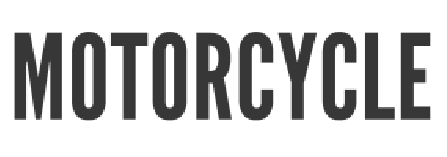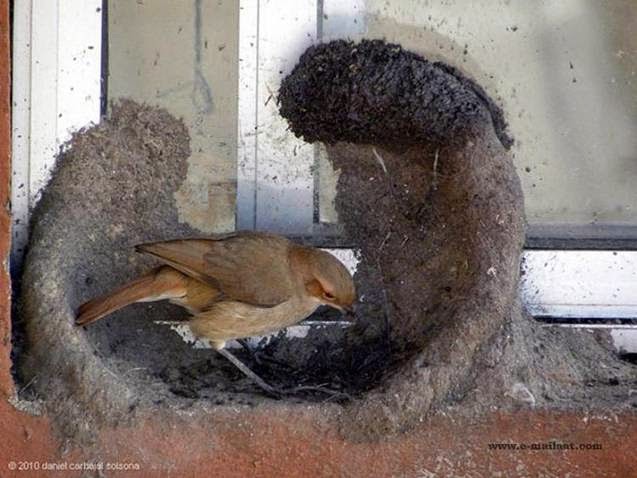Wednesday, 28 October 2020
Wednesday, 27 May 2020
Time On Risk
If there is one thing that is commonly misunderstood or downright unknown by consumers in the insurance industry, it is the concept of "time on risk".
One of the fundamental premises of insurance is the "promise to pay", the idea that when an insurance contract is signed, the insuree will pay the premium. Insurance contracts are established on an annual basis, quite often set up on a monthly payment plan. When an insuree does not make a monthly payment or the renewal date passes and a payment isn't made, notification is sent to the insuree.
Of course, things in life happen and people make mistakes, forget to pay that bill or other such circumstances. There is a certain grace period for missing a payment, but if the financial obligation is not met, the cancelallation process begins, a registered letter is sent and the insuree is no longer covered by their policy.
This is where we get to the meaning of time on risk. The insurer had you covered and was going on the premise that you would pay, waiting for such payment to be made while you were protected by their policy. After the grace period, they now must assume that you either do not want to be insured anymore or can no longer uphold your part of the contract to pay for the service and they officially cancel your policy.
"Time On Risk" is the period from which you last made your monthly payment, or your official renewal date in the case of a yearly payment plan, up to the point when you are officially cancelled. Under the premise of the insuree wanting to be insured and promising to make payment, they are obliged to pay the cost of that period as "time on risk".
Oddly, despite it's importance, time on risk is not a well known concept and subsequently can be problematic for many people, particulalry when it comes to the financial side of insurance. It is the reason we advise people to deal with a payment issue immediately, even if the amount can't be paid right away. Better to work out some terms or settle the payment delinquincy with the insurer than wait until it gets to the cancellation stage.
And as for cancelling, we require that process to be done in writing, as it is important to have "paperwork" to distribute and ensure the insurer, the insuree and the broker all know that a policy is being cancelled.
Thursday, 21 May 2020
Word Of The Day: Melanistic
While it may seem fairly "normal' to see a black panther in some parts of the world, this big cat is actually an example of either a leopard or a jaguar with an unusual development of black pigmentation called melanism.
The word ‘melanism’ comes from the Greek word "melanos", which means black. As suggested, a cat, or any other animal, that has this unique variation in their genetic makeup will be completely black. There is also psuedo-melanism ( also known as abundism), which is a similar variation of the gene manifesting itself in dark spots or stripes that cover a large part of the animals body and make it appear black ( melanistic ). Think of it as the opposite of albinoism, which many people are aware and even occurs in humans.
This dominant gene variation relating to melanism is considered adaptive, meaning it can be to the advantage of the melanistic animal for survival. Just imagine a Black Panther hunting in the dark and you'll get the point!! Kind of a scary thought, if you happen to walk around in the jungle at night!! haha.
Of course, the funny thing about the Black Panther, especially after the movie came out, is that many people falsely believe it to be a species of its own. As mentioned in the heading, this big cat is a melanistic version of a Jaguar or Leopard and sometimes it's spots can still be seen faintly, though hard to see with the dark skin and hair. This genetic feature does occur in almost all the different species of cat and is even possible with a Mountain Lion (Puma or Cougar) but there has not been any recording sightings of such a beast in North America to date.
Stay tuned for some of my future posts about other examples of melanistic animals seen in our amazing world, and a few that will include albinoism as well.
https://twistedsifter.com/2012/02/10-incredible-melanistc-all-black-animals/
Wednesday, 13 May 2020
AMSS Says...."Watch Out For Left Turns!"
Our friends at the Alberta Motorcycle Safety Society are always thinking of your safety when it comes to riding, and their website offers up all kinds of excellent articles on ways to keep you safe while on your motorcycle.
One of the AMSS "Projects" pertains to a risky situation that motorcyclists encounter when riding, the potentially dangerous left turn. While attempting to turn across the path of oncoming traffic is risky, motorcyclists generally make this manouver safely as they have a lot at stake if it's not done correctly.
What AMSS wants you to think about has more to do with what the motorcyclists isn't in control of, the action of oncoming drivers who blindly make that left hand turn into the path of the motorcyclist.
"Left hand turns is a consistent top three in risks affecting motorcycle riders. Far to many injuries and fatalities are as a result of left hand turns. In 2015 alone, this equated to 40% of driver at fault collisions. Very rarely is this a rider at fault collision. We wanted to ensure this message was very clear as we are small, therefore not easily seen.
Drivers - take that extra second before you make that left turn to ensure there is no one in your path. You could save a life. #ThinkBike
Riders - put yourself in a safe place when approaching intersections and ensure that left turning vehicle sees you. Be prepared for anything, be defensive. #ThinkBike
Sunday, 10 May 2020
Wednesday, 6 May 2020
The Hagerty Files: Gow Job
Our good friends at Hagerty do some amazing work within the Vintage and Classic car community, including some great articles and videos which feature vehicles such as the Gow Job!
Strange name, right? Before the term “hot rod” was in vogue (many early gearheads actually found the term derogatory), the preferred nomenclature was “gow job” or simply “gow.”

Most people consider the genesis of hot rodding to take place after WWII, when soldiers returned to the U.S. fascinated by mechanized transportation and eager to use their newfound mechanical skills. However, these pre-war gow jobs were the true pioneers. (At the time, the term “hot rod” was reserved for the retro equivalent of a vape-smoking dude-bro in his straight-piped 350Z.) Gows were machines of function over form and often sported a somewhat ragged appearance, thanks to their builders’ penchant for removing “unnecessary” body panels to save weight in early land speed and beach racing.
While the term is usually applied to hopped-up Model-Ts, the etymology of the word “gow” goes back to the 1800s and the Cantonese word for opium, “yao-kao.” The term was used in horse racing to describe drugged-up or “gowwed-up” horses, and the phrase made a short leap to early hot rods that were similarly hopped up for performance. It wasn’t until the post-war era that “hot” evolved to describe something cool, hip, or fast and “hot rod” became the universal term for a modified car.
Wednesday, 29 April 2020
Master Builder
It's Spring time and many a woodland critter is making a home for their expectant new arrivals.
Take a look at these photos which I found on the internet, featuring some master builders that have diligently constructed themselves a great little family home.
Not only does this nest bind nicely to the corner of the window and come complete with a windbreak doorway that also helps keep the babies from falling out, but these crafters did it all with just a beak!! Look Ma, no hands! haha
Even the effort of gathering the material, mixing it wet, and then transporting it all to the construction site, one tiny bit at a time, certainly merits respect! Nice job by the photographer to chronicle the process too!!
Saturday, 25 April 2020
Wig Out!
Oh yeah, if the internet wasn't so weird, what would you do? Apparently, watching videos of cats isn't quite good enough and dolling up your cat in a fancy wig seems to be a trend. Admittedly, it's pretty funny and who can't use a good laugh these days.
Wednesday, 22 April 2020
Words!
I'm fascinated by the English language and all its' intricasies, so when coming across a word never seen before there is always a bit of research done to learn definitions, roots, and other words which have an association.
Todays' word is "swallet", which I read in an article about a newly discovered cave in the Cariboo Mountains in B.C.. The story tells of the cave being undetected until now because it had been blocked with snow and ice. The blockage melted away and exposed th entrance to an enormous cave ( likely caused by climate change, but that's another story unto itself).
In the meantime, the word "swallet" intrigued me and started a little research sorte on the internet. While the use of the word in the article hade me infer that it meant a cave opening, the term has more of an association with sinkholes and cenotes, with the following Miiriam-Webster definition
swal·let | \ ˈswälə̇t \plural -s
: an underground streamalso : an opening through which a stream disappears undergroundAfter seeing a photo of the cave entrance, and reading more about the cave being contantly filled with ice and snow, the usage of the term seems perfect. The cave entrance is like an open mouth, below grade and on the side of the mountain, which means water and snow would naturally fill the void. Even if there was emelting action and running water, the flow could have been occuring beneath the upper layers of snow and ice, and helped the erosion of the cave while remaining unseen.
 |
| The "swallet" |
Wednesday, 15 April 2020
Helpful Tips For Working From Home
While the idea of working from home (WFH) may be appealing to many, the harsh reality is that it's not all that easy and you'll need to follow some basic rules to help you overcome the many challenges to being productive.
7 Ways To Help Promote Productivity When Working From Home
1) Set Up A Work Area!
One of the biggest challenges to working from home are all the distractions that you might not get in your regular office environment. Sure you have associates and co-workers in the office but it's a different situation when it's a life partner or room mate that is also working from home, or kids that are not in school.
If you can set up your work area in a separate room, that's ideal, but even if you designate an area of a room or a section of your kitchen table as your "office", it will establish this as the place where work is taking place. That "office environment" not just sends a signal to your brain that you are here to work, but also signals those around you that you should not be disturbed.
2) Use Work Triggers!
When you head to the office your brain begins to prepare for what needs to be done that day and you start getting into "work mode". This may not be as easy to do when you don't actually leave your home or do a commute but it's not impossible to get some triggers in place.
Following your usual morning routine of having a shower, getting dressed for work, and/or having a coffee and some breakfast, is one way to get your mind set. If it's possible, go for a walk around the block or up and down your apartment building stairs as part of your commute, then when you re-enter your place you've arrived at work and will be ready to go!
3) Set A Schedule
Just like your office environment, there's a routine that you would normally follow during the day. Whether it's taking the first hour of your day to check and respond to e-mails or attend a team meeting, establishing a time line for your work day will keep you moving in the right direction. You may also have obligations and committments during work that need to be dealt with during the day, especially if you have children. Scheduling them in to the day will allow for the time they require and get you back on to the work routine in an efficient manner.
4) Make A List
Just like the idea behind #3, creating a to-do list helps you stick to your work plan! Whether it's to help you get organized, prioritize tasks, or just make yourself accountable, a list is a great way to mark progress and prepare for the next task. And hey, who doesn't love the satisfaction of crossing things off a list as they are accomplished?
5) Stay On Task!
While it may be convenient to toss a load of laundry into the washing machine or whip up a batch of cookies before lunch, it's best to avoid any chores that will sidetrack you and disrupt your "work mode". Save non-work related tasks for after hours, even if that's during your lunch break. If it is a must do chore, put it into your schedule and give it a time line.
6) Avoid Electronic Isolating
While it's a great thing to be able to rely on modern technology and communicate with clients, managers or co-workers via e-mails, there's nothing like having an actual conversation with someone, be it on the telephone or in a video-conference. Keep in touch with people on an "ear to ear" or "face to face" basis, even if that's not physically in the flesh. There are plenty of free apps and other platforms, like Zoom and Webex, for holding virtual meetings.
7) Be Prepared For Glitches
Despite your best efforts, there will be impediments to having a good work flow when working from home. Knowing that this is always a possibility and not allowing yourself to get rattled by these sorts of hiccups will save you some stress and ultimately help you get back on track quicker.
Some people adapt more easily to a work from home environment but by using the aforementioned guidelines anyone can be more productive and achieve success in these types of scenarios.
Saturday, 11 April 2020
Spring Hare v.s Easter Bunny Repost
Spring Hare v.s Easter Bunny
Spring has always been celebrated as a time of rebirth and new beginnings so is it any wonder that in Paganism, the rabbit or hare served as strong symbol in their rituals.

Hares and rabbits, as well as eggs, have always been symbolic of fertility and highly associated with Spring, since many animals give birth at this time of year. Many Christian celebrations were hybrids of (or downright hijacked versions of ) Pagan beliefs, and it would seem logical that Easter is one of those occasions.
 |
| The Easter bunny probably has about as much to do with Easter as Jesus Christ |
Of course, Christians aren't the only peoples celebrating these traits at this time of year, as Hindus hold their Holi festivals and Japanese have what is called Sakura, when the cherry tree blossoms.
Rabbits and hares also figure prominently in many cultures, and throughout many centuries, as far back as the Sui Dynasty in 6th and 7th century China. This is particularly true of the three hare symbol. which has shown up in Mongol metalwork, Iranian coins, an Islamic built shrine found in southern Russia, cave drawings and pottery in the Orient, and many churches and cathedrals in parts on the U.K. and Germany.
 |
| Paderborn Cathedral |
 |
| This wooden carving is found under the eave of a medieval roof in Devon England |
 |
| This motif is found on a tombstone in the Ukraine |
Rabbits and hares have also shown up in Mayan and Aztec cultures, often associated with other gods/goddesses relating to fertility, such as Ixchel. Interestingly, the Aztecs also had a belief in the 400 drunken rabbits, which is the subject of a future post.
 |
| Mayan goddess of fertility, Ixchel, with a hare |
Wednesday, 8 April 2020
Covid Street Art
Street Artists tend to give you an instant read on what is going on with current affairs and what younger people are thinking about those issues. The Covid-19 pandemic is front and centre on everyone's mind of course, and that's certainly reflected in all the aerosol art that you'll see in this post.
 |
| Bolsonaros is the president of Brazil and has downplayed the Covid-19 pandemic |
Subscribe to:
Comments (Atom)




























































